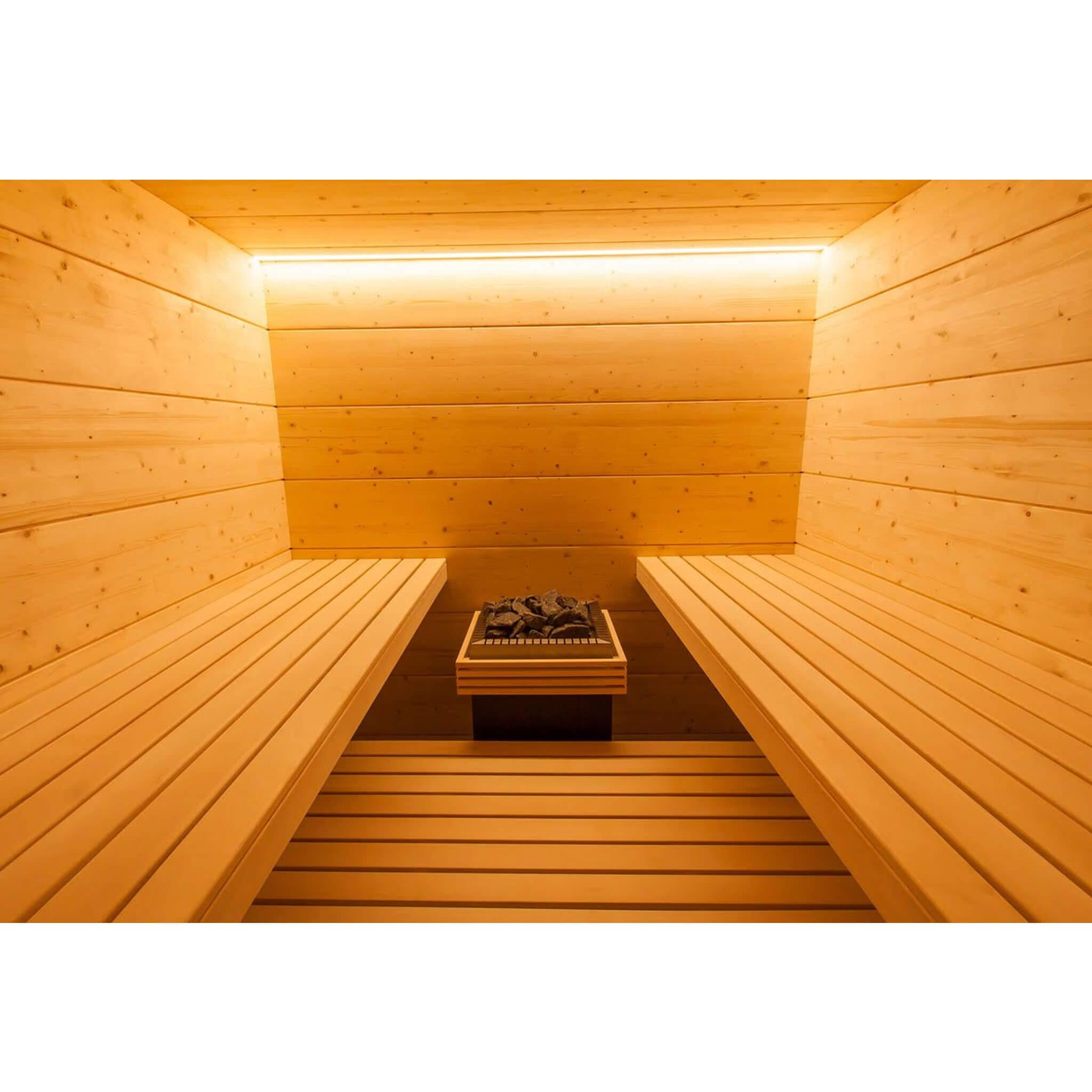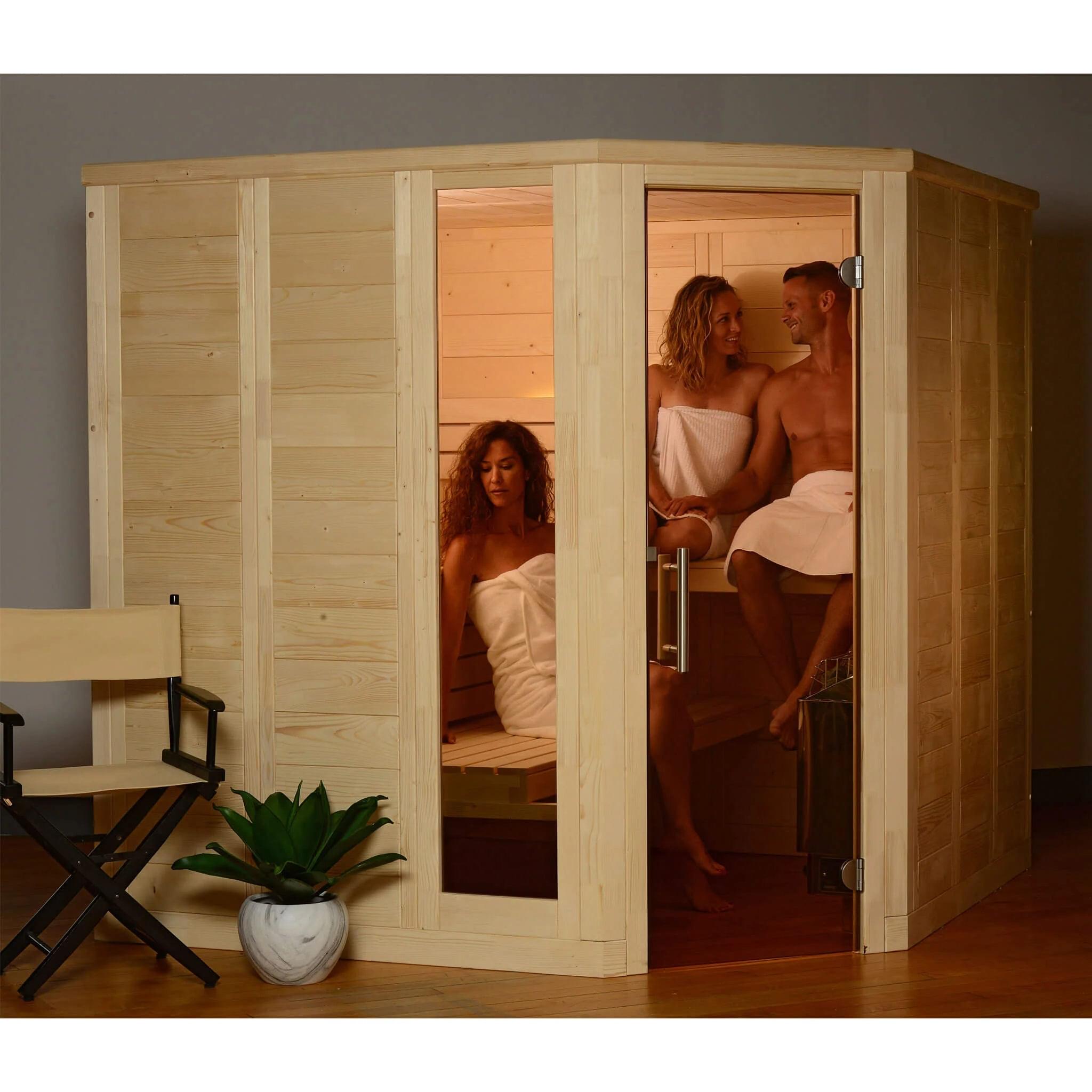Fascination About Traditional Sauna
Fascination About Traditional Sauna
Blog Article
Traditional Sauna Can Be Fun For Everyone
Table of ContentsA Biased View of Traditional SaunaGetting My Traditional Sauna To WorkThe 7-Second Trick For Traditional SaunaSee This Report on Traditional SaunaLittle Known Facts About Traditional Sauna.
The majority of the weight shed in a sauna is water loss and is re-gained upon rehydrating. Without an uncertainty sauna can be an important part of a healthy weight loss program. To consider the differences between traditional and IR saunas, I will certainly separate these into verifiable, theoretical, and fabricated differences.Thus, the hottest factor in the saunawhich goes to the ceiling directly over the sauna heateris usually in between 185 and 190 F. Claims that a standard sauna goes beyond 200 F is merely not real and not relevant for electrical saunas offered in the United States. The temperature for a far-infrared sauna is typically set in between 120 and 140 F; however, unlike the standard sauna, the goal in and IR room is not to achieve a high temperature.

When a standard sauna has actually been properly warmed, the sauna walls are cozy, the air temperature has actually achieved established temperature and the rocks are super warmed. As an interesting side note, the warmed wall surfaces and the rocks are sending out far-infrared warmth, combined with the warmed air, to develop an "covering heat".
The Only Guide to Traditional Sauna
When the high temperature level is accomplished, the components cycle on and off to maintain the heat. The majority of typical sauna users take pleasure in putting water over the rocks to create vapor to raise sauna humidity degrees. The advantages of putting water over the rocks include: making the space extra comfortable, moistening the nasal flows, and allowing the use of aromatherapy by mixing necessary oils with the water.

When the power gets in the body, it creates the body temperature level to boost and inevitably causes perspiration. In an infrared sauna it is necessary for the emitters/heaters to remain on practically frequently. Because there is no mass of rocks to keep heat, the use this link sauna will more cool down if the emitters shut off.
Traditional Sauna Fundamentals Explained
As stated over, the sauna bather in an infrared room wishes to position himself before operating emitters to obtain maximum take advantage of the warm. The heating time for both rooms can be extremely different, depending upon just how the spaces are utilized. For a typical sauna, a bather must permit 30-40 minutes for the room to attain a preferred temperature level and to appropriately pre-heat the rocks.

A well created sauna will usually achieve a temperature of 150-160 F in concerning 30-40 mins (Traditional Sauna). For hotter temperatures, the area may need to heat for a longer duration. Once the room accomplishes established temperature level, the heating unit will certainly cycle on and off, generally running regarding 50% of the moment. The shielded walls and the warmed rocks will certainly maintain the area hot and at steady temperature levels.
To some, 15 minutes was "squandered" while the infrared power heated up the timber panels instead than heating up a body, while others locate a pre-heated area to be more comfy and think a raised beginning temperature level is necessary to begin perspiring. The length of suggested use for each room is roughly the exact same (10-15 minutes per session); however, due to the reduced air temperatures and the capacity to feel the results of infrared warmth much faster than other a traditional sauna, it is not uncommon for an individual to spend a total of 20-30 mins in an infrared sauna.
The Best Guide To Traditional Sauna

The typical cost per kWH of electrical energy in the U.S. is roughly $0.11, so a 4.5 kW heating unit will cost about $.50 to run for one hour, if the heating unit runs constantly for one hour. Generally a sauna heating unit will certainly run for 75% of the very first hour and 50% of succeeding hours on considering that the components cycle once the set temperature is accomplished.
A 2 person far-infrared room is normally literally smaller sized than a conventional sauna, usually about 4' x 4' or smaller. The IR furnace is normally 1.5-1.7 kW using a 120 volt 15 amp plug-in service. Because the space can be made use of faster than a sauna area, we will certainly assume the room is used for to of an hour including warm up time.
There is a hardly ever talked about difference in the social experience between the two rooms. While our culture has actually lost a few of the social benefit of the conventional sauna experience, it can be really socially gratifying (Traditional Sauna). From household time in the sauna, to heart-felt conversations with loved ones, to sauna partiesthe standard sauna experience can lead to intimate interacting socially
All about Traditional Sauna
Many higher end infrared areas include tinted light treatment, noise systems and full-glass fronts. The size of a lot of rooms permit 2 individuals to comfortably make use of the space, while some layouts might enable a third or 4th individual to utilize the room. Custom-made infrared spaces are likewise offered, with area sizes offered approximately 7' x 8' x 7' high.
Report this page